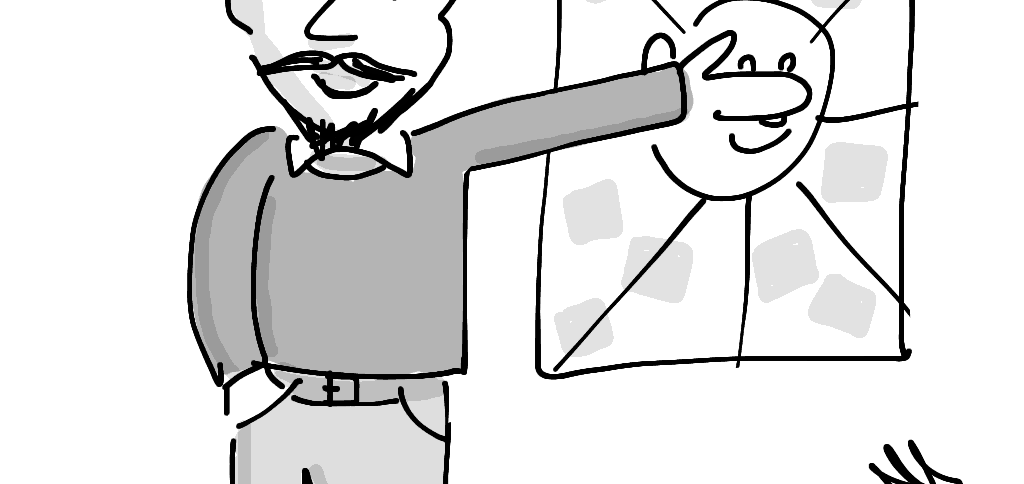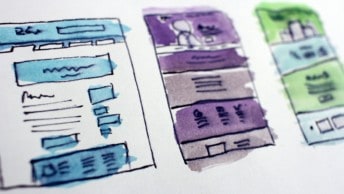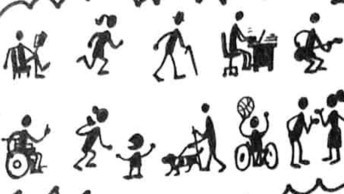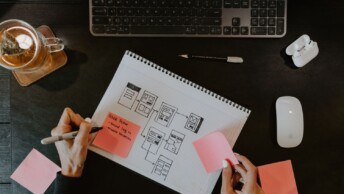This guest post is from Ben Adonis, an intern helping the UX Mastery team with their current community project. After facilitating a workshop for the first time, we asked Ben to share his thoughts.
I recently had the opportunity to join Matt and Luke in facilitating my first empathy map workshop. It was held with the lovely staff from the Mathematics Association of Victoria (MAV).
The facilitator plays an important role when conducting any form of workshop: they help pave the way for discussion in a group; they provide guidance and context to the audience; and they provide direction.
Facilitating this workshop not only taught me how to help a group of people create an empathy map, but I also learned much about what works and what doesn’t when playing the role of a facilitator. I hope that sharing these tips will help other first-time facilitators.
1. Learn from others.
Facilitation may sound fairly straightforward, but there is an art to getting it right. Luckily, many others have paved the way and are generous with their advice.
For instance, Brad Ty Nunnally’s article, Why the Best Designers are also Facilitators outlines the qualities that facilitators should have, and how to improve. This is an essential read for first-time facilitators.
2. Practice, practice, practice!
You may have had a bad experience the first time you facilitated a workshop. Don’t let it discourage you—the best way to remedy this is to continue gaining experience in facilitating workshops and constantly practicing. Seek out opportunities to chalk up your facilitation hours, rather than sitting by the sidelines.
3. Be prepared.
On the morning of my workshop I remember Matt telling me, “I’m naturally an extrovert, but public speaking doesn’t actually come naturally to me. I compensate for that by over-preparing, so that I have a plan for every scenario I encounter during a workshop.” It was a smart piece of advice.
Despite gaining plenty of great insights and responses from the audience during my first workshop, I was disappointed with my lack of preparation. If I could go back in time, I would have prepared more for this workshop (at one point during the workshop, I was in the process of giving examples to the audience when I drew a blank!) Even though this isn’t a presentation and the group will likely be doing most of the talking, you should still prepare what you’re going to say beforehand in order to save yourself from embarrassment.
Part of this preparation should include understanding who will be attending. If you don’t know the attendees, you may be able to look them up on LinkedIn. Even better, ask your key contact to fill you in with as much detail about each individual as possible—who they are, what role they play within their organisation, and what their priorities and motivations are. Echoing the principles of user-centred design, if you know your audience, you can better frame the questions you ask them in the workshop.
4. Don’t hurry the group.
In a conversation, silence is often a sign that nothing is happening. However, in a workshop environment, when you’re asking people to think and to engage, this may not be the case. During my workshop there were long pauses of silence, which I initially took this as a sign that the audience was finding it hard to generate ideas, or had finished taking notes. I continually felt the need to jump in and say something, but eventually realised that in fact the complete opposite was happening—their creative juices were flowing.
You can usually sense when the silence has moved from comfortable (I’m thinking) to awkward (I’m finished) based on people’s body language. If they’re looking directly at you with a blank face, or looking around the room, it may be time to wrap things up. Just remember to be patient and give plenty of time for thinking—it’s important to remember that participants may be generating ideas throughout the entire workshop, not only in the time you’ve allocated for that task.
5. Give them closure.
When Matt was taking me through an overview of the workshop he told me to have a closing summary. Now, this is pretty standard for any form of public speaking, but I feel it is something that’s overlooked when presenting workshops. I’ve attended previous workshops that did not include a closing statement or summary about the activities that took place. All that was offered in terms of a closing summary was a Thanks and a Goodbye.
It can be confusing for audience members to come out of a workshop without a sense of progress and clear next actions. Your participants should be given a summary of the workshop outcomes, information about how the activity results will be used, and what is expected from them moving forward. By having a closing summary we give context and closure to the workshop attendees.
6. Embrace the nerves!
Unless you’re a seasoned pro, you’ll probably be a bit nervous the first time you facilitate a workshop. For my first experience as a workshop facilitator, only six people attended, and I can’t deny that I was nervous—it can’t be avoided.
Our nervousness comes from the fact that we think we will fail. Instead of fighting or worrying about your nerves, embrace them, and transform that nervous energy into positive energy. Remind yourself that it’s OK to make mistakes; think about the outcome of the workshop; take deep breathes and concentrate on talking calmly and slowly. I’m no expert, but this really made a big difference for me, so there’s a good chance it will work for you too.
7. Have fun!
If it’s clear that you’re enjoying yourself, your positive vibes will rub off on the rest of the group. However, if you’re nervous and anxious, that will also propagate. Enjoy the thrill of being in the spotlight, smile, and focus on keeping things upbeat, and your workshop will be enjoyable for the attendees as well as for you.
Overall, my experience as a first-time workshop facilitator was great. I learned so much in an hour, and I’m sure I’ll learn more the next time I have the opportunity to do so.
No article can substitute the real deal of facilitating a workshop. Get yourself out there and gain some first-hand experience. Make mistakes and learn from them. A huge thanks to Matt and Luke for giving me the chance to learn.








Very useful article Ben. I am going to have my 1st empathy mapping workshop shortly and your article will really prove helpful for me.
Thanks for the article Ben, I will be co-conducting my first Design-Thinking workshop next monday and frankly I’m quite nervous. Reading your thoughts was soothing!
Good luck on Monday, Yagiz! Does your co-facilitator feel the same?
Really nice tips, i will have my first time co-facilitator but truly i am so nervous and do not think i can do it
Thanks a lot Ben, am preparing to facilitate in a seminar for the first time so reading from you , makes me equipped.
Hi there,
Really cool tips, and part of plenty of the reading I’m doing tonight on the net. I’m starting a facilitators course on Monday 13th, and googling everything. I’m a military musician, have been for 22 years, and attending the course with 19 other people I’ve never met before. How do I facilitate without teaching?!? I have no idea if anyone else on the course has ever studied music at all, or what an MRI (not the medical one) is. There are a few cool ideas like seating them in a round circle, and having them write three things down, 2 true 1 false, about themselves and read it out. That’ll help everyone get to know each other and be a good icebreaker… Perhaps I could open with, “So, what d’ya know about reggae?” Any advice would be superbly appreciated. Thanks. Dave.
Nice article Ben!